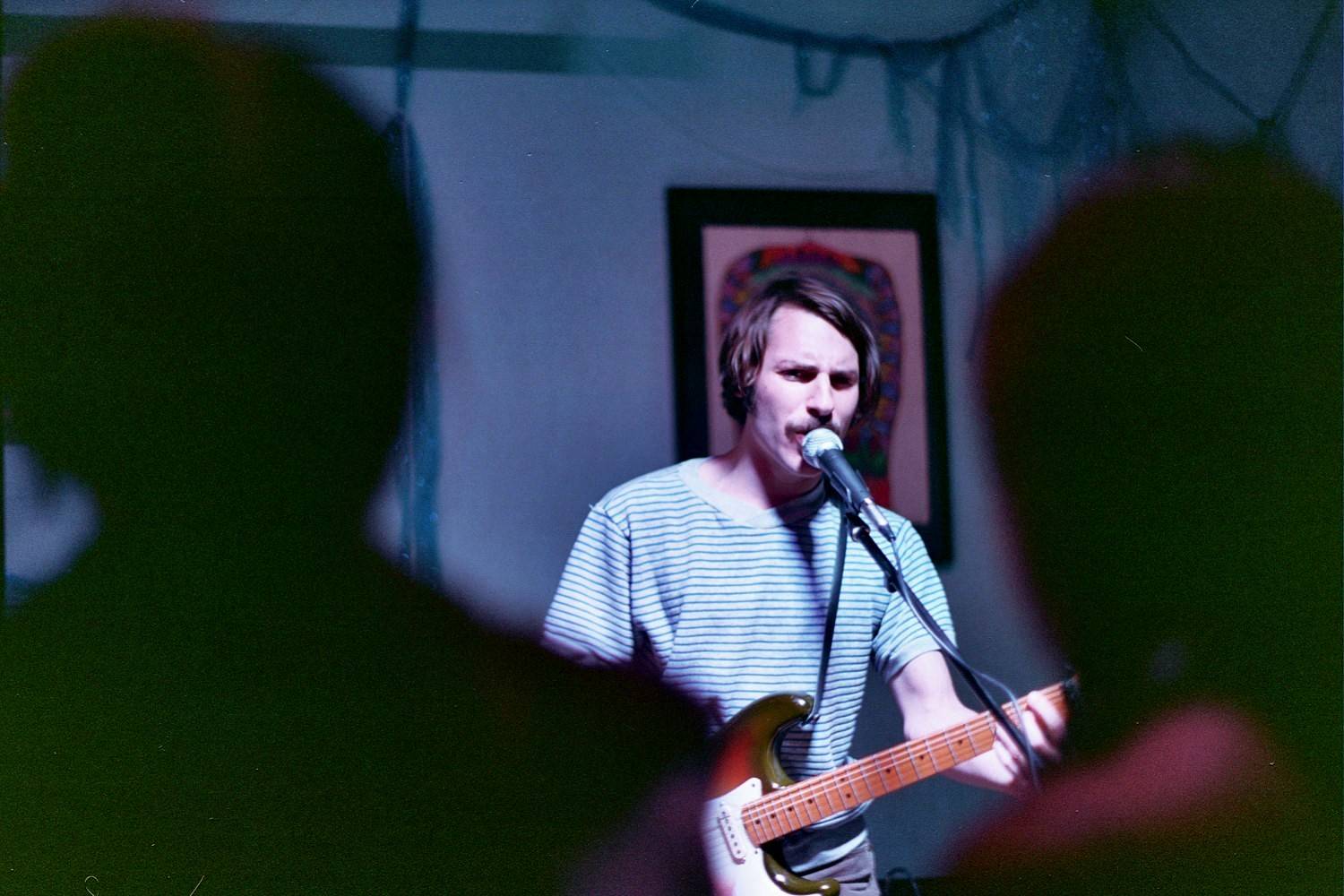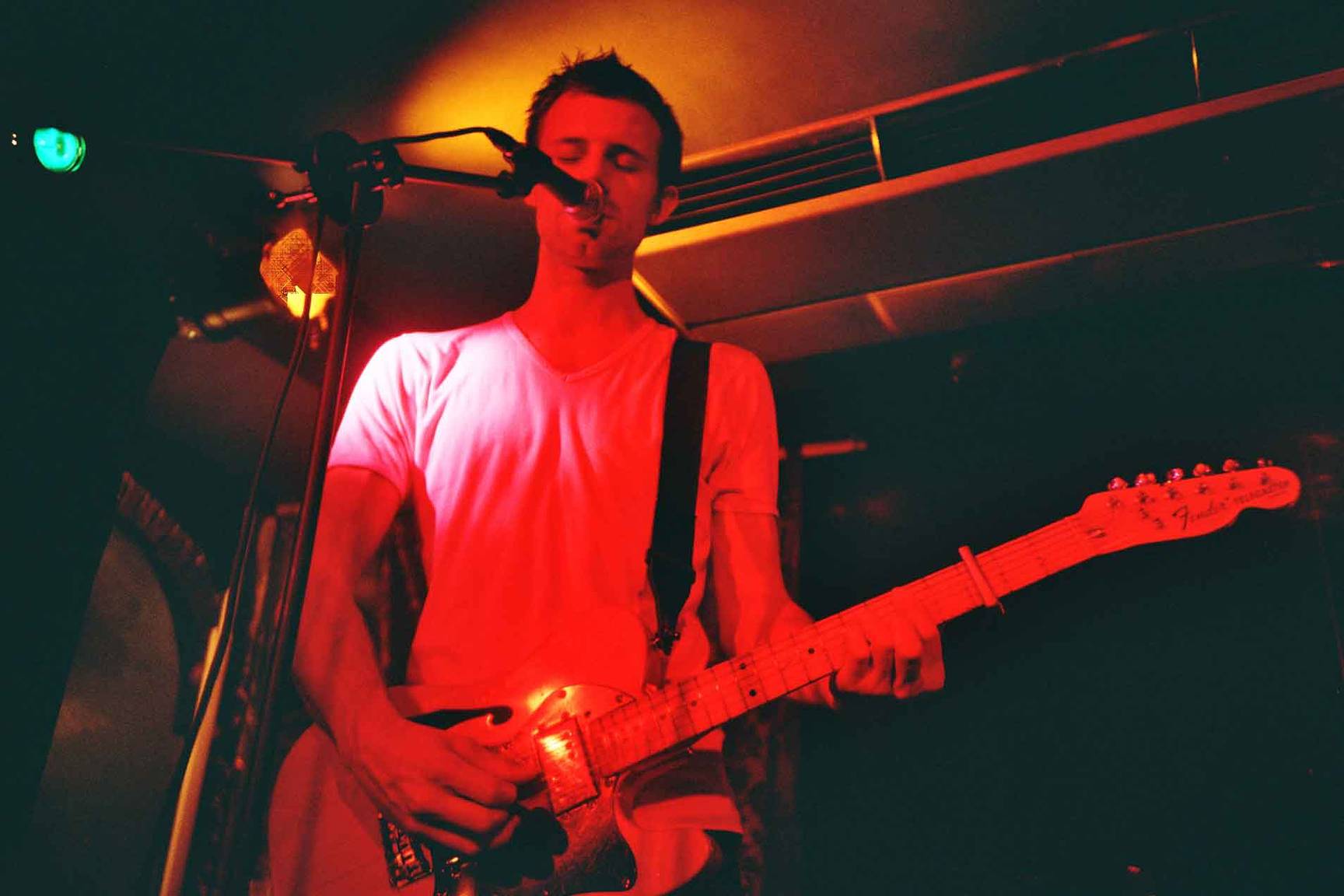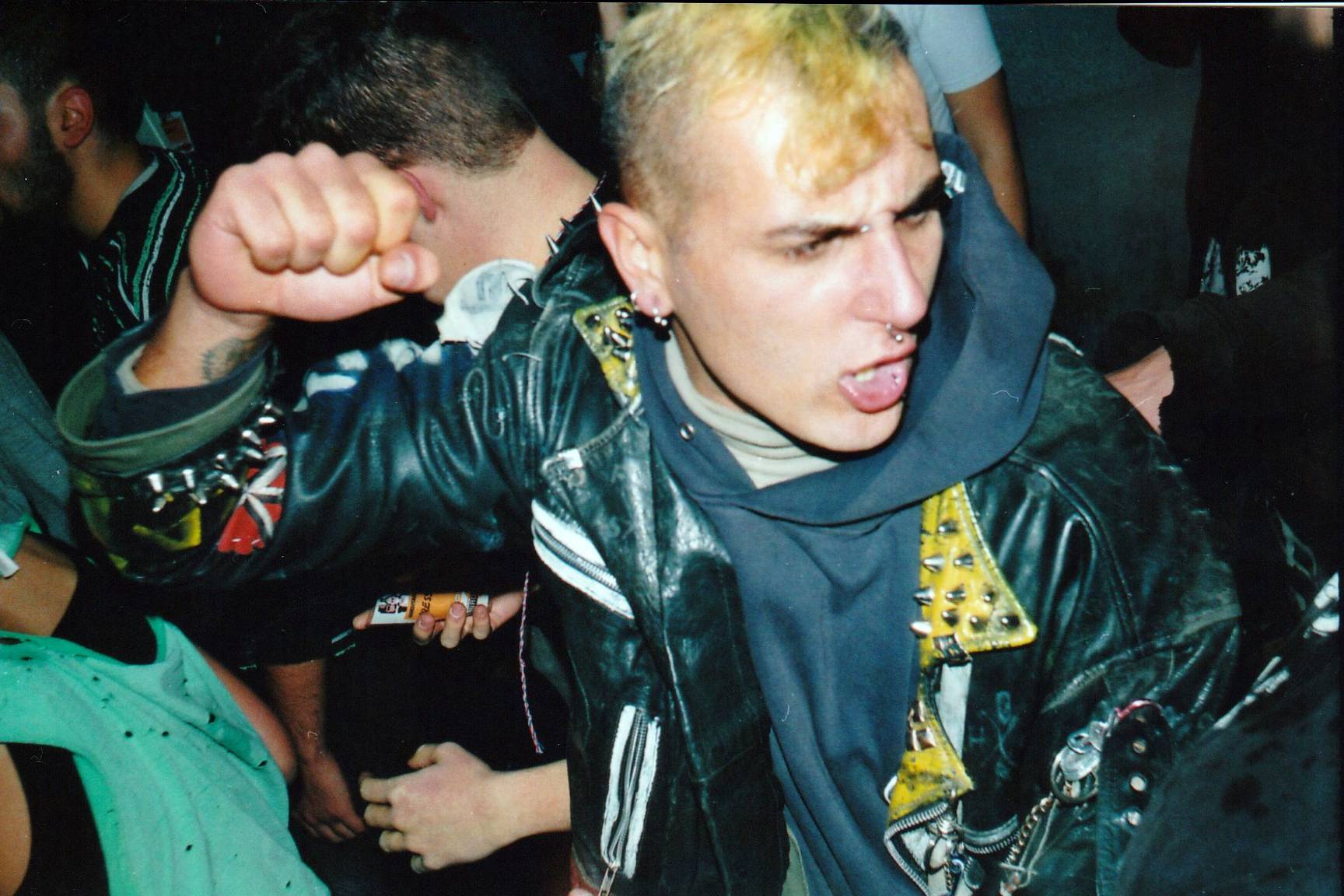No Flash, No Shirt, No Problem: A Guide to Shooting Shows with No Flash
2 34 Share TweetShooting with no flash in low light is always an issue. You either get a pitch black photo with a small silhouette, or a huge blob-like blur from having too long of an exposure. So what can you do?
I've been shooting shows in almost every kind of scenario and the biggest pain is the "NO FLASH PHOTOGRAPHY" rule that is either plastered all over the venue or a silent rule when you're shooting in a small and cozy space. Over time and countless disappointing rolls of film, I've developed some tips and tricks for shooting film with no flash.

Get Close
The closer you are to the light source at your show the easier it will be to shoot. Especially when the light source is just some string lights and one or two overhead fluorescents you want to be as close as possible to that light. The further away you are from your subject, the harder it will be to get a good exposure as the light defuses with distance. Also, being closer to the subject allows for more intimate shots and cool angles that you won't be able to get from afar.
Keep Your Aperture Open
This might seem like a no-brainer, but you'd be surprised. Keep your aperture as wide as humanly possible. Yes this does mean your depth of field will be pretty shallow, but hey if you are following the first tip you should be right in the front row, so it shouldn't be an issue. Having your aperture open allows the most amount of light into your camera as possible. If you're shooting a camera with no written f-stops, cloudy or indoor mode will typically be the biggest aperture allowed on your camera, so use that. For 35 mm, I found that f1.8 or f2.8 works fantastic. With 120, f2.8 works well too.
Take Your Time
Have your shutter speed too fast and not enough light comes in. Shoot too slow and the performer looks like a blob from the movement. I always think that the holy grail shutter speed is 1/60th of a second. It shoots movement beautifully without being too shaky, but also allows just enough light in to get a good exposure. If you do not have direct control over your shutter speed, shooting on bulb is a good move. Most point and shoots automatic shutter speed is 1/125th of a second which is a bit too fast for a place with almost no light. The simple push of your finger on bulb will be a tad bit longer than the automatic setting and just allow that tiniest bit more of light to enter your camera.
Push Your Film
Just like Salt-N-Peppa say, "Push it real good!" What pushing film is, is shooting your film at a higher ISO than the film is rated at and developing it at that rate. For example, if you are shooting a 400 ISO film, you can set your camera to 800, 1600 or even 3200 ISO and shoot the film at that rate. Pushing film is measured in stops, so each grade of ISO you go up to is equivalent to one stop. The higher the ISO the more sensitive your film is to light. There are some manufacturers that still make film up to 3200 ISO, making it so you don't need to push the film, but aren't as accessible as standard 400 or 800 ISO films.
The one downside to pushing film is that the grain will be noisier and you will have higher contrast. It's all based on your photo preference, there's always ways you can smooth out the noise in the printing or editing process once you receive your negatives.
Things to Try
Shoot some instants. Instant film has different sensitivity to light than negative film, creating a different image. Plus you get the instant gratification of seeing your photo before you shoot your whole roll. You can also get some pretty cool light streaks in there too.
Get above the crowd. Don't be afraid to not see what you're shooting. Raise your arm up, shoot that shot and don't worry about it. Sometimes the best shots are the ones you forgot that you took.
Get in the pit. Again, please be safe. The pit can be a fun place to take some photos as it's usually right smack in front of the singer and you're generally pushed towards the front anyway.
Cross process your film. Cross Processing means processing your film in the wrong chemicals or in another film process. For example, developing C-41 film in Black and White Chemistry. It can give your film a wonky and cool look.
Enjoy yourself. Don't forget what you're there for: the Music. You're there to capture the music performance, whatever that is. So don't think too hard about how your photos are going to come out, or if you got the best angle possible. Keeping in tune with the music and energy of the performance and the crowd will yield the best photos. Take a break from shooting, scream those lyrics out and have a great time.
For low-light shots, load up on high ISO film. Visit our online shop or any of our worldwide gallery stores to stock up on Lomography Color Negative 800 and Lomography Color Negative 400 film!
2018-03-04 #tutorials








































2 Comments